
by Emily Crum, NOAA Office of Ocean Exploration and Research
August 16, 2013
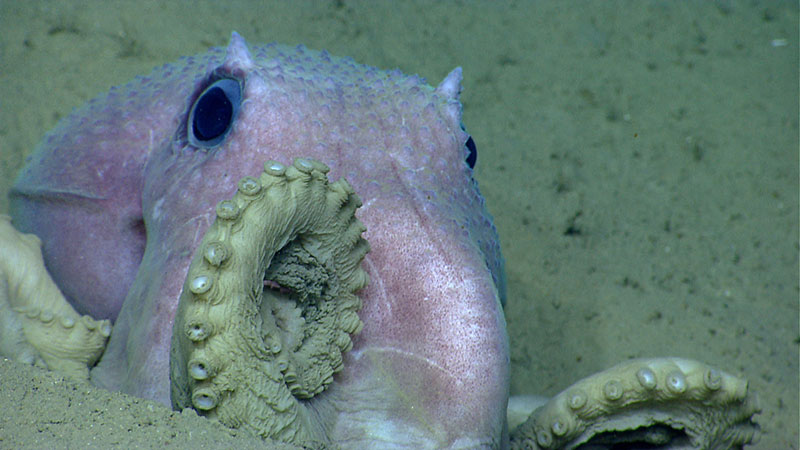
An octopus strikes a pose for the remotely operated vehicle near Shallop Canyon. Image courtesy of the NOAA Office of Ocean Exploration and Research, Northeast U.S. Canyons Expedition 2013. Download larger version (jpg, 1.3 MB).
As the manager of the Ocean Explorer website and the person posting about NOAA’s Office of Ocean Exploration and Research on Facebook and Twitter , it has been extremely gratifying and exciting to watch the live video feeds from the Okeanos Explorer Northeast U.S. Canyons 2013 expedition catch people's attention.
We started with good traffic to the expedition website during Leg 1. People were watching, we got featured on the White House blog, a few media outlets picked up the video. Then, during Leg 2, the videos hit the mainstream...big time. The Associated Press ran a story about the expedition and invited us to participate in a Tweet Chat. We started getting mentioned in more news stories and on blogs and websites, from Nature to Gawker.com .
Things took off. In the Twittersphere, the hashtag #Okeanos let us hear from fans, as more and more dedicated followers of our live video began posting comments, questions, and favorite photos. On Facebook, we’ve seen a 35 percent increase in the number “likes” to our page and the steady flow of comments about how much people enjoyed the live video has been a treat to read.
Traffic to the live video pages on the Ocean Explorer website increased by so much that the videos started getting glitchy and we were rushing around to tweak things and make sure the online experience was the best possible. As the expedition comes to a close, the live video web pages have had approximately 660,000 views. Consider that, for last year’s Okeanos Explorer Gulf of Mexico expedition, our live video pages received a total of 80,000 visits – over the course of 38 days. On just August 13, 2013, the video pages received over 100,000 views!
It wasn't just the scientists participating in the mission – it was all of us – everyone who was watching live online and sharing the excitement with their friends and families. So, in tribute to our online followers who helped the Okeanos go viral this summer, I’ve collected and posted below some photos that I think you’ll enjoy, but that haven’t hit primetime.
Part of the reason we do this is for you – to help everyone, everywhere understand the importance of ocean exploration, not just for the pretty pictures and cool video, but for the science, data, and information that will come out of each mission and that can make a lasting impact in protecting Earth’s underwater realm. Hopefully, we’ve made believers out of you and you’ll stick around for more.
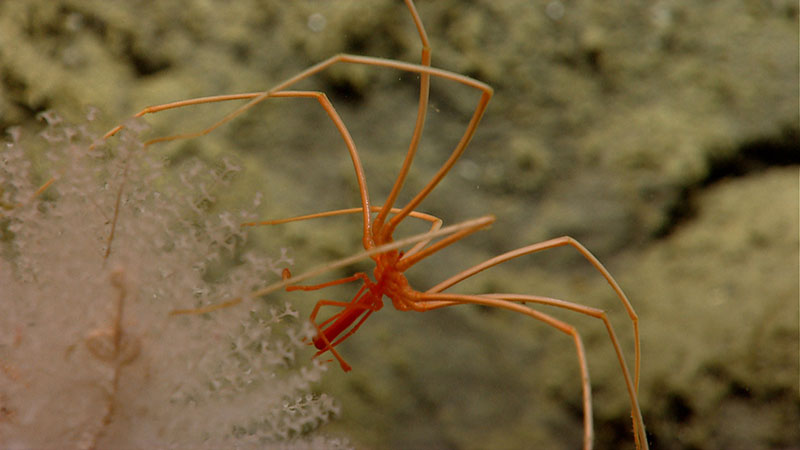
A sea spider, or pycnogonid, seen while exploring Oceanographer Canyon. Image courtesy of the NOAA Office of Ocean Exploration and Research, Northeast U.S. Canyons Expedition 2013. Download larger version (jpg, 1.1 MB).
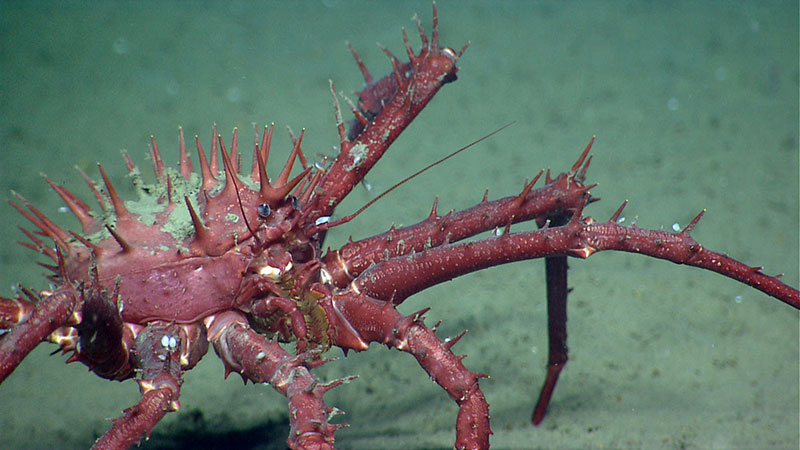
A porcupine crab makes its way over the muddy bottom. Image courtesy of the NOAA Office of Ocean Exploration and Research, Northeast U.S. Canyons Expedition 2013. Download larger version (jpg, 1.3 MB).
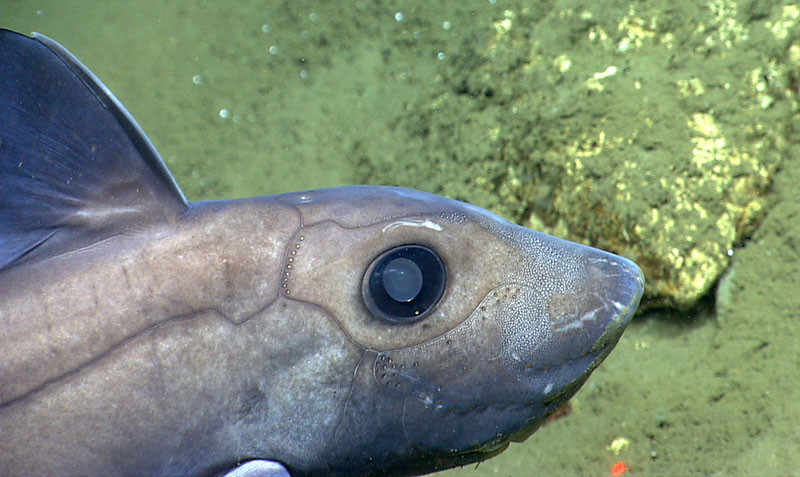
A chimaera swims lazily a couple meters above the seafloor in Lydonia Canyon. Image courtesy of the NOAA Office of Ocean Exploration and Research, Northeast U.S. Canyons Expedition 2013. Download larger version (jpg, 1.0 MB).
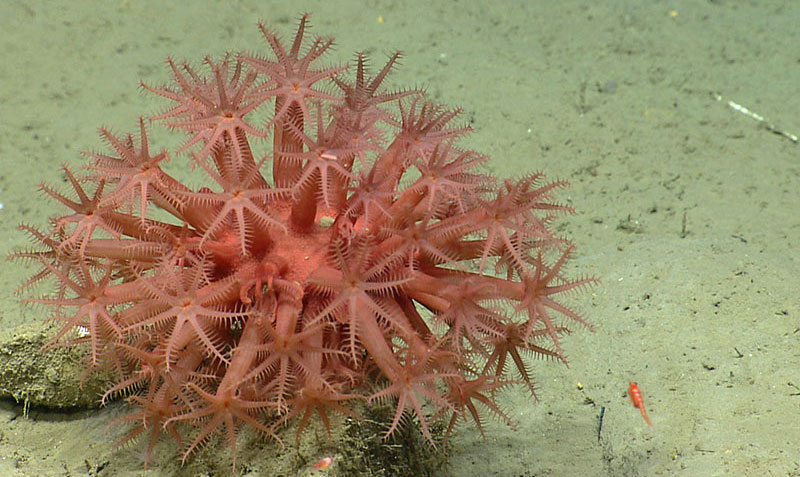
Anthomastus coral in Oceanographer Canyon. Image courtesy of the NOAA Office of Ocean Exploration and Research, Northeast U.S. Canyons Expedition 2013. Download larger version (jpg, 1.4 MB).
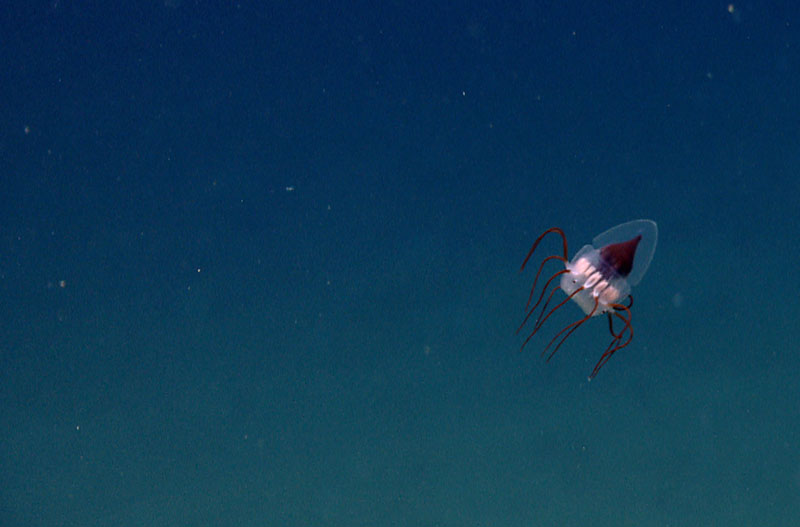
An unusual deep-sea jelly swims across the remotely operated vehicle's field of view. Image courtesy of the NOAA Office of Ocean Exploration and Research, Northeast U.S. Canyons Expedition 2013. Download larger version (jpg, 655 KB).
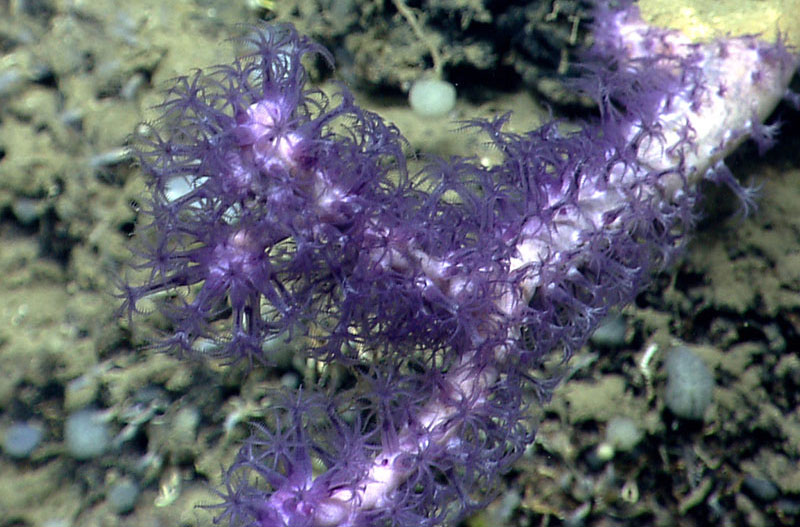
A striking purple coral, Clavularia sp., seen in Nygren Canyon. Image courtesy of the NOAA Office of Ocean Exploration and Research, Northeast U.S. Canyons Expedition 2013. Download larger version (jpg, 834 KB).
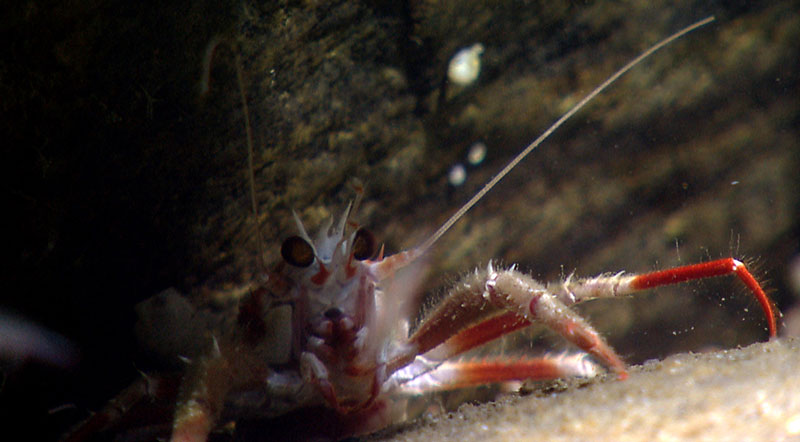
A squat lobster peeks out from under a rock in an intercanyon between Powell and Lydonia Canyons. Image courtesy of the NOAA Office of Ocean Exploration and Research, Northeast U.S. Canyons Expedition 2013. Download larger version (jpg, 933 KB).
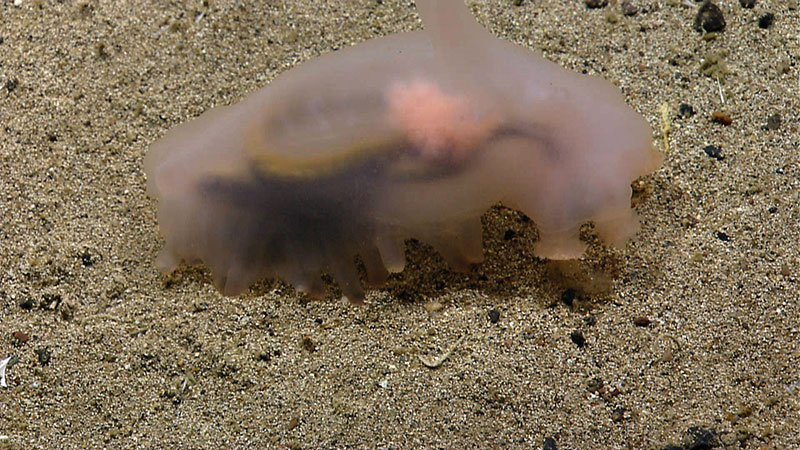
A translucent holothurian, or sea cucumber, shifts through the sediment for his dinner. Image courtesy of the NOAA Office of Ocean Exploration and Research, Northeast U.S. Canyons Expedition 2013. Download larger version (jpg, 1.5 MB).
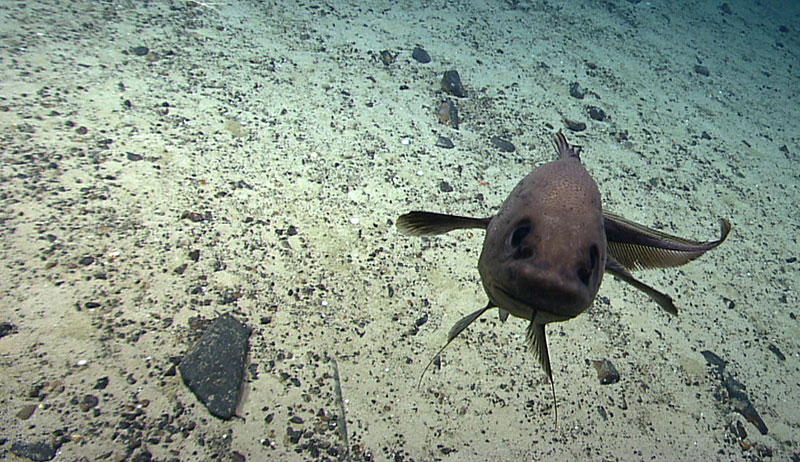
A fish gets up close and personal with the Deep Discoverer remotely operated vehicle. Image courtesy of the NOAA Office of Ocean Exploration and Research, Northeast U.S. Canyons Expedition 2013. Download larger version (jpg, 1.1 MB).
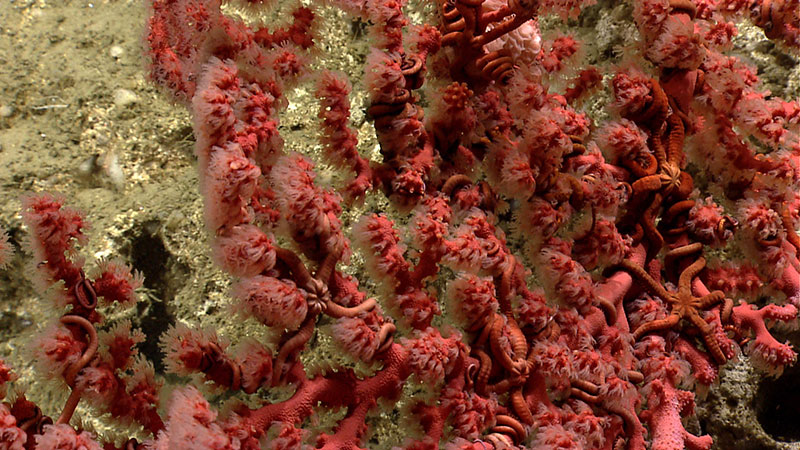
A Paragorgia coral with numerous brittle stars living in its branches. Image courtesy of the NOAA Office of Ocean Exploration and Research, Northeast U.S. Canyons Expedition 2013. Download larger version (jpg, 1.5 MB).
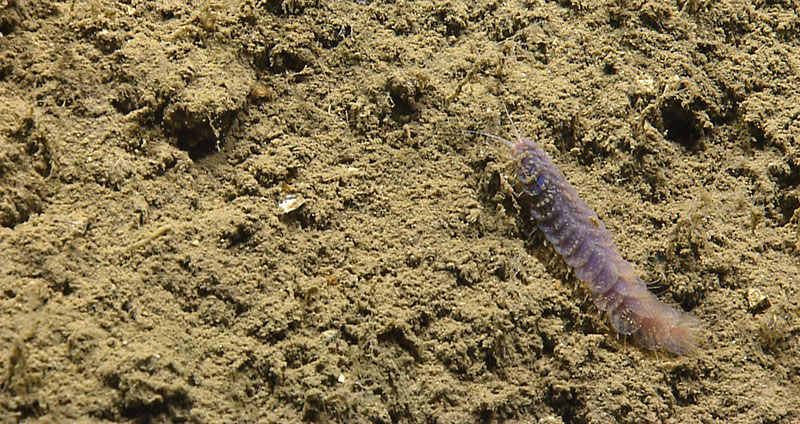
A scale worm makes her way across the sedimented seafloor of Lydonia Canyon. Image courtesy of the NOAA Office of Ocean Exploration and Research, Northeast U.S. Canyons Expedition 2013. Download larger version (jpg, 1.3 MB).
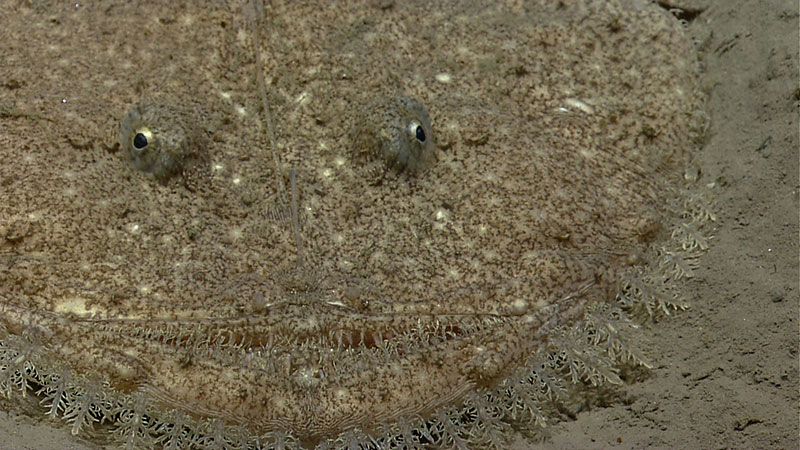
A goosefish lays and waits for its dinner to swim through its strike zone. Image courtesy of the NOAA Office of Ocean Exploration and Research, Northeast U.S. Canyons Expedition 2013. Download larger version (jpg, 1.3 MB).
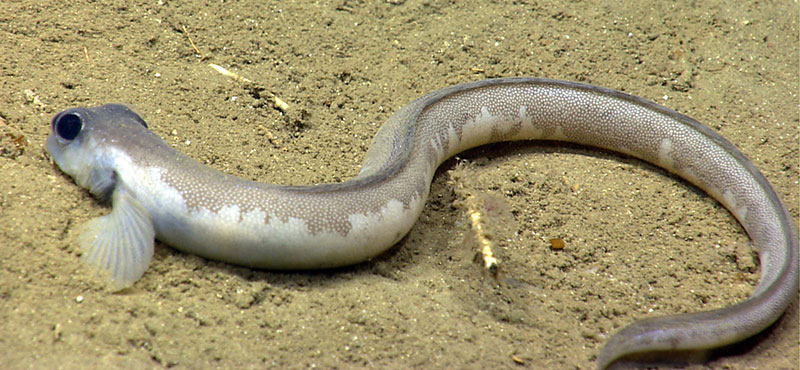
As seen in Heezen Canyon, an eelpout rests on the seafloor. Image courtesy of the NOAA Office of Ocean Exploration and Research, Northeast U.S. Canyons Expedition 2013. Download larger version (jpg, 1.3 MB).

Corals form habitat for other organisms. This Paramuricea coral has anemones and brittle stars living on it. Image courtesy of the NOAA Office of Ocean Exploration and Research, Northeast U.S. Canyons Expedition 2013. Download larger version (jpg, 1.3 MB).